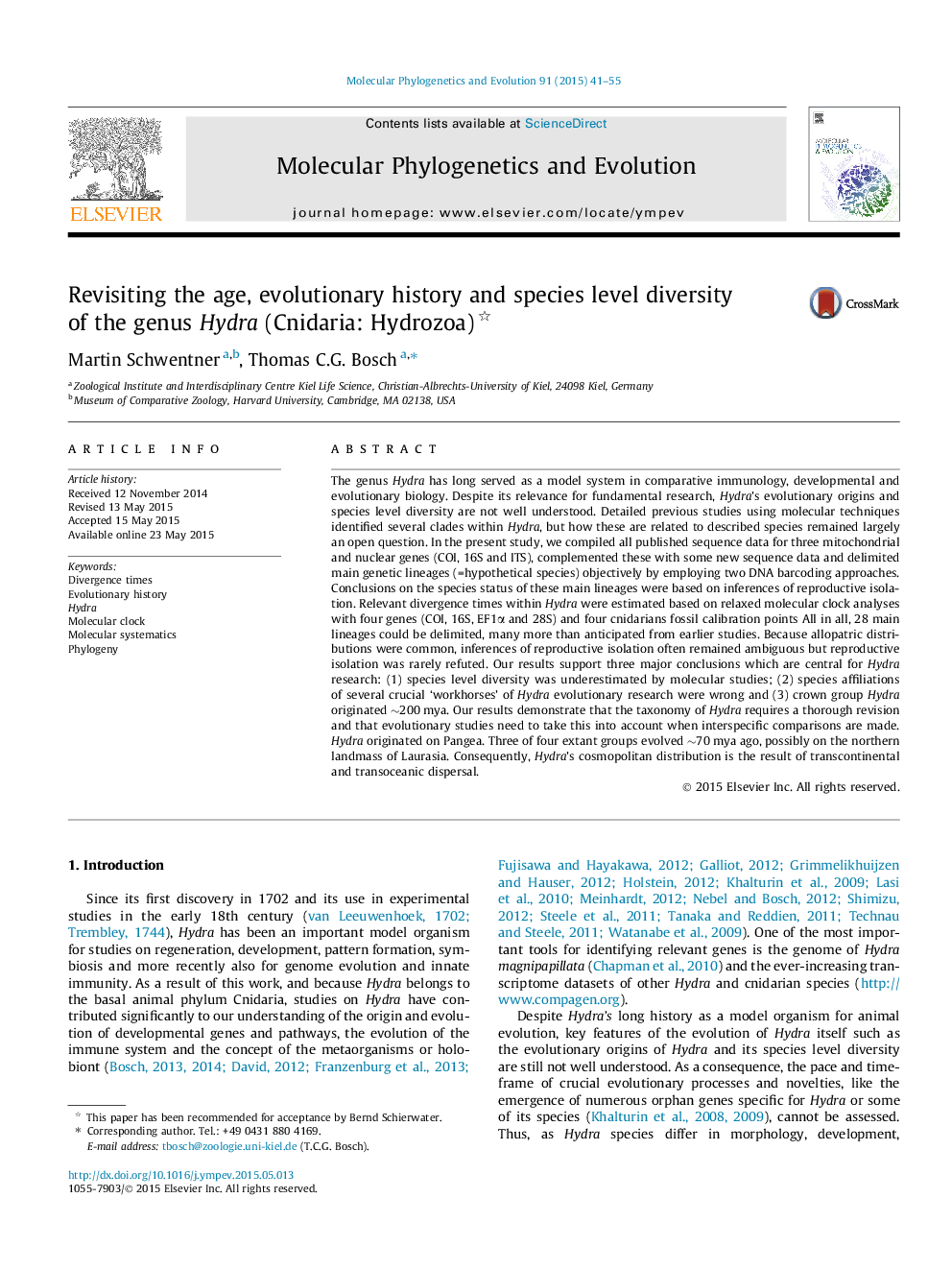| Article ID | Journal | Published Year | Pages | File Type |
|---|---|---|---|---|
| 2833779 | Molecular Phylogenetics and Evolution | 2015 | 15 Pages |
•Hydra’s species level diversity is much higher than suggested by earlier molecular studies.•The two main ‘workhorses’, H. vulgaris and H. magnipapillata, belong to the same species (probably the ‘true’ H. vulgaris).•Crown group Hydra originated ∼200 mya on Pangea.•Hydra’s cosmopolitan distribution is probably the result of transcontinental and transoceanic dispersal.
The genus Hydra has long served as a model system in comparative immunology, developmental and evolutionary biology. Despite its relevance for fundamental research, Hydra’s evolutionary origins and species level diversity are not well understood. Detailed previous studies using molecular techniques identified several clades within Hydra, but how these are related to described species remained largely an open question. In the present study, we compiled all published sequence data for three mitochondrial and nuclear genes (COI, 16S and ITS), complemented these with some new sequence data and delimited main genetic lineages (=hypothetical species) objectively by employing two DNA barcoding approaches. Conclusions on the species status of these main lineages were based on inferences of reproductive isolation. Relevant divergence times within Hydra were estimated based on relaxed molecular clock analyses with four genes (COI, 16S, EF1α and 28S) and four cnidarians fossil calibration points All in all, 28 main lineages could be delimited, many more than anticipated from earlier studies. Because allopatric distributions were common, inferences of reproductive isolation often remained ambiguous but reproductive isolation was rarely refuted. Our results support three major conclusions which are central for Hydra research: (1) species level diversity was underestimated by molecular studies; (2) species affiliations of several crucial ‘workhorses’ of Hydra evolutionary research were wrong and (3) crown group Hydra originated ∼200 mya. Our results demonstrate that the taxonomy of Hydra requires a thorough revision and that evolutionary studies need to take this into account when interspecific comparisons are made. Hydra originated on Pangea. Three of four extant groups evolved ∼70 mya ago, possibly on the northern landmass of Laurasia. Consequently, Hydra’s cosmopolitan distribution is the result of transcontinental and transoceanic dispersal.
Graphical abstractFigure optionsDownload full-size imageDownload as PowerPoint slide
